#he chaozong
Photo
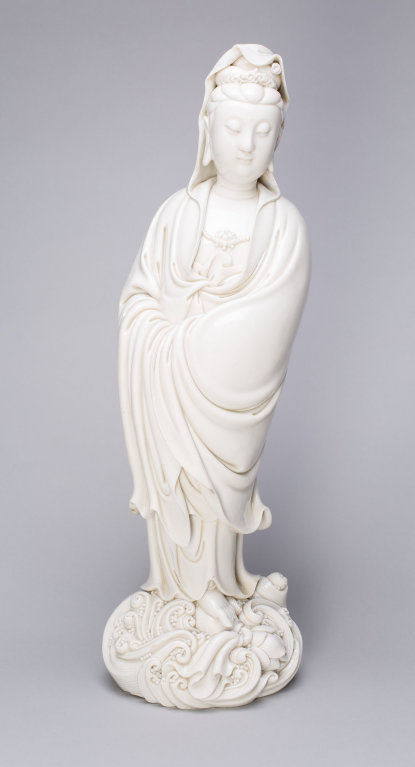
Goddess Crossing the Sea (Guo hai Guanyin)
Dehua ware (blanc de chine) porcelain from the Qing dynasty (1644–1911), Dimensions: 47.1 x 15.0 x 13.1 cm
From the Art Institute’s website:
In the late Ming dynasty, sailors and fishermen of southeast coastal China worshipped this bodhisattva, Guohai Guanyin, as a savior. The goddess was believed to float across the sea on a lotus flower, rescuing men in a tempest. The refined porcelain body and delicate, creamy white glaze indicate that this statue was made at the kilns of Dehua, a rural county in southeast China that is famous for its fine, white porcelain stone. The square seal impressed on its back shoulder attributes this figure to a well-known porcelain sculptor of Dehua, He Chaozong (active late 16th early 17th century).
Beginning in the late seventeenth century, Dehua figures and vessels were dispatched to world markets. Porcelains of this type subsequently achieved fame in Europe under the French name, blanc de chine ("white from China"), and inspired similar English and French wares in soft-paste porcelain, notably at Chelsea and Meissen.
Sources: The Art Institute of Chicago
#Dehua ware#blanc de chine#porcelain#Qing dynasty#Guanyin#waves#sea#Fujian#bodhisattva#goddess#He Chaozong#export porcelain
18 notes
·
View notes
Photo

Goddess Crossing the Sea (Guo hai Guanyin), 1644, Art Institute of Chicago: Asian Art
In the late Ming dynasty, sailors and fishermen of southeast coastal China worshipped this bodhisattva, Guohai Guanyin, as a savior. The goddess was believed to float across the sea on a lotus flower, rescuing men in a tempest. The refined porcelain body and delicate, creamy white glaze indicate that this statue was made at the kilns of Dehua, a rural county in southeast China that is famous for its fine, white porcelain stone. The square seal impressed on its back shoulder attributes this figure to a well-known porcelain sculptor of Dehua, He Chaozong (active late 16th early 17th century). Beginning in the late seventeenth century, Dehua figures and vessels were dispatched to world markets. Porcelains of this type subsequently achieved fame in Europe under the French name, blanc de chine ("white from China"), and inspired similar English and French wares in soft-paste porcelain, notably at Chelsea and Meissen. Lucy Maud Buckingham Collection
Size: 47.1 × 15.0 × 13.1 cm (18 9/16 × 5 15/16 × 5 3/16 in.)
Medium: Dehua ware (blanc de chine); porcelain
https://www.artic.edu/artworks/12509/
19 notes
·
View notes
Text
Annals of Zhengshi 2 (505)
[From WS008. Including the adventures of Wang Zu.]
[Zhengshi 2, 19 February 505 – 8 February 506]
2nd Year, Spring, 1st Month, bingzi [23 February], used the Heir to the state of Dangchang, Liang Mibo, as the King of his state.
The state of Dengzhi dispatched envoys to court with tribute.
2nd Month [21 March – 18 April], the Di of Liang# province rebelled and cut off Hanzhong's transport roads. The Inspector Xing Luan again and again greatly routed them.
Summer, 4th Month, jiwei [6 June], the King of Chengyang, Luan, passed away.
On yichou [12 June], a decree said:
Relying on the worthy to clarify good order has been passed through in the counsels from the past. Circulating their manners to help in applying themselves in truth are indeed the many gentlemen. Yet [those] assessed by the Central Correctors only live inside gates and mansions, the personnel section's moral laws and human relationships still do not bring up talent. Thereupon they make the gallant and virtuous scarcely promoted, and the ministers apply themselves to many blockages. Not concentrating on their selection, how might they examine their progress? The Eight Seats can thoroughly discuss former eras' methods for commending gentlemen, and framework for drawing up the worthy, and certainly cause the talented and schooled to equally stretch out.
On bingyin [13 June], since the Di of Chouchi were rebellious, decreed the Brilliantly Blessed Grandee Yang Chun as provisional General who Pacifies the West, to lead the multitudes to chastise them.
Xing Luan dispatched the Army Director Wang Zu on a western offensive. He again and again routed Xiao Yan's various armies, and thereupon entered Jiange. He seized Yan's General Fan Shi'nan, and sent him off to the Imperial City.
5th Month, xinsi [28 June], the Di thief [lacuna] Hu led the multitudes to surrender.
6th Month, jichou [6 July? In the 5thMonth], a decree said:
The previous court's merited subjects sometimes personally had the misfortune to be reprimanded and demoted, their sons and grandsons were sunk and obstructed. Sometimes the route of officialdom neglected the sequence, and was putting aside the old flow. To follow that and not select, how then to encourage and motivate?
When talking of and recalling previous achievements, [we] feel there are those close and those far apart. For the [imperial] lineage and commoner families, those whose grandfathers and great grandfathers' merits and achievements can be chronicled but have no court offices, and those who have offices and talent and ability are copiously brought forth, pursue talent when assessing conferrals.
On jiayin [31 July], Xiao Yan's General of the Best of the Army, Li Tian, and others set up camps east of Shiping commandery and north of Fu River. Wang Zu confronted, struck, and defeated them. He beheaded Yan's General of the Best of the Army, Zhang Tang, General who Assists the State, Ma Shi, Generals who Soothes the Boreal, Li Dang and Jiang Jianzu, General who Assists the State, Feng Wenhao, Dragon Prancing General, He Yingzhi, and others.
On jiazi [10 August], decreed the Master of Writing Li Chong, the Grand Treasurer Vassal Yu Zhong, the Cavalier Regular Attendant You Zhao, the Remonstrating Consultant Grandee Deng Xian; that Chong and Zhong [being] Envoys Holding the Tally and also Combined Palace Attendants, Xian Combined Yellow Gates, everyone to be Great Envoys, and bring together and pass judgement on the outer provinces and inside of the imperial demesne. If there were those of their groups of wardens and prefects who were blamed for neglecting to clearly display and lay bare, they were to readily carry out judgement. Provinces and garrisons with heavy duties were to take heed to make it known.
On yichou [11 August], Xiao Yan's General of the Best of the Army, Wang Jingyin, General who Assists the State, Lu Fangda, and others attacked Zhuting. Wang Zu greatly routed them, and beheaded their General who Assists the State, Wang Jingyin, and Dragon Prancing General Zhang Fangchi.
On dingmao [13 August], the Inspector of Yang province, Xue Zhendu, greatly routed Xiao Yan's general Wang Chaozong, and took prisoner and beheaded 3 000.
On wuchen [14 August], Xiao Yan's general Lu Fangda stationed at Shuxin City [?]. Zu again dispatched the Army Director Lu Zuqian and others to strike and defeat him. They beheaded Yan's General of the Best of the Army Yang Boren and General who Soothes the Boreal, Ren Anding.
Autumn, 7th Month, jiaxu [20 August], a decree said:
Us succeeding to steering the treasured series is now in the 7thyear. Virtue and beneficence is not yet spreading, and discernment does not illuminate the distant. A person's illness from injustice is what is still propagating. And yet the litigations from investigations and examinations are not unimpeded among the subordinates, the worthy and stupid are not separated, ink-black and white are equally threaded together, not the means by which to change the people's ears and eyes, and make good and evil encourage their hearts.
Now allot and dispatch the Great Envoys, to scrutinize the regions, tour and investigate. In due course, if their mistakes and demerits and the sound of their manners are fitting together, then rectify and demote, to thereby clarify the awesomeness of a thunderclap, and to unroll the elevation of the yak-tail coach. Following that, on observing the manners and telling apart customs, gather and inquire into merits and transgressions, praise and award the worthy, investigate and penalize the excessive and depraved, attend to the poor and care for the ill-treated, and so declare Our heart.
On wuzi [3 September], Wang Zu struck and routed Xiao Yan's army, and beheaded his Dragon-Prancing General Yu Zenghui, General who Soothes the Boreal Ku Baoshou, General who Assists the State Lu Tianhui, General who Establishes the Martial Wang Wenbiao.
Wang Zu pressured Fucheng.
On renchen [7 September], Xiao Yan's Grand Warden of Baxi Yu Yu, General of the Best of the Army and Master of Army Directors Li Tian, and others confronted him in battle. Zu struck and routed him. The prisoners and beheaded numbered a thousand.
8th Month, renyin [17 September], decreed the King of Zhongshan, Ying, to go south and chastise Xiang and Mian.
On gengxu [25 September]. Wang Zu dispatched the Army Directors Ji Hongya and Lu Zuqian and others to attack and rout Yan's army. They beheaded his Inspector of Qin and Liang# provinces, Lu Fangda and others, fifteen people.
On renzi [27 September], Wang ZU again dispatched Army Director Lu Zuqian and others to rout Yan's army. They beheaded his Chief Controller and General of the Best of the Army, the State-Founding Count ofZitong county, Wang Jingyin, Liu Da, and others, twenty-four generals.
On jiayin [29 September], Yang province struck Yan's general Jiang Qingzhen at Yangshi, and routed him.
This Month [14 September – 13 October], Yan's Grand Warden of Miandong, Tian Qingxi, led 7 commanderies, 31 counties, and 10 090 households to adhere within.
9th Month, jisi [14 October], the Inspector of Yang province, Yuan Song, struck and routed Yan's Inspector of Xiang province, Yang Gongze, and others, and beheaded and captured several thousand.
Winter, 11th Month, wuchen, New Moon [12 December], the King of the state of Wuxing, Yang Shaoxian's junior uncle Jiqi planned rebellion. Decreed the Brilliantly Blessed Grandee Yang Chun to chastise him.
Wang Zu besieged Fucheng. The various commanderies and defence posts in Yi province who surrendered were twenty-three, the people who sent off their records and registers were more than 50 000 households. Then Zu pulled in the army and withdrew.
12th Month, gengshen [2 February], also decreed the Great General of Agile Cavalry, Yuan Huan to be careful, and ordered him to chastise the rebelling Di of Wuxing.
5 notes
·
View notes
Text
Random Stuff #7: the Characters of “The Longest Day in Chang’an” that Really Existed (Part 2)
(Part 1 Here)
Yuan Zai (元载/元載) and Wang Xunxiu (王韫秀/王韞秀):
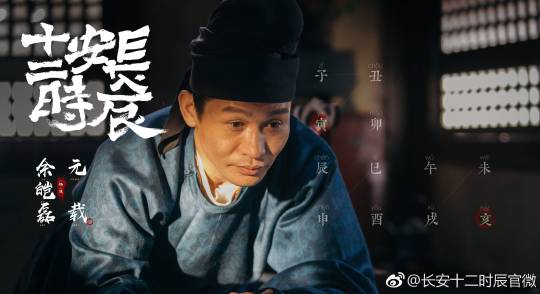
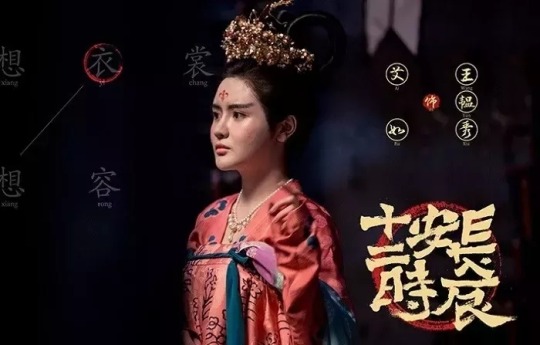
Yuan Zai in the drama was arguably even more manipulative than Lin Jiulang, and this is somewhat historically accurate, though like Lin Jiulang's historical counterpart Li Linfu, Yuan Zai also had some accomplishments, like promoting people who were good at finances. However, after he became the chancellor during Emperor Daizong's reign (Daizong is the eldest son of Suzong), he became extremely corrupt, only giving promotions to people who gave him gifts. While chancellor, Yuan Zai was also a major political opponent against Li Bi. But because he was corrupt, and because people envied his power within the court, Yuan Zai gradually fell out of favor with Emperor Daizong. Eventually, Yuan Zai (and his entire family) was ordered to commit suicide.
Yuan Zai's relationship with his wife Wang Yunxiu, however, was very different from the depiction in the drama. Yuan Zai married Wang Yunxiu even before he came to Chang'an in pursuit of a better career. In fact, Wang Yunxiu was the one who encouraged him to do so. Before setting out for Chang'an, the pair exchanged poems with each other (both poems are in the collection "Complete Collection of Tang-era Poems", or 《全唐诗》), so the love was probably mutual and not manufactured for a purpose.
Yao Runeng (姚汝能):

Historically, Yao Runeng was not the descendant of the famous Tang dynasty chancellor Yao Chong (姚崇). Actually, he was a relative "nobody", just like Zhang Xiaojing. So it was fitting that the real Yao Runeng would be the author of the book ("The Deeds of An Lushan") that contained the only real record about Zhang Xiaojing.
About that book he wrote: it's been speculated that the big boss behind the Persian gold coins was An Lushan, who was the perpetrator of the rebellion that destroyed Chang'an a mere 10 years later. Since Yao Runeng was given a gold coin in the last episode, him being the real-life author of a book about An Lushan and the rebellion becomes rather interesting.
Cheng Shen (程参)/ historical: Cen Shen (岑參):
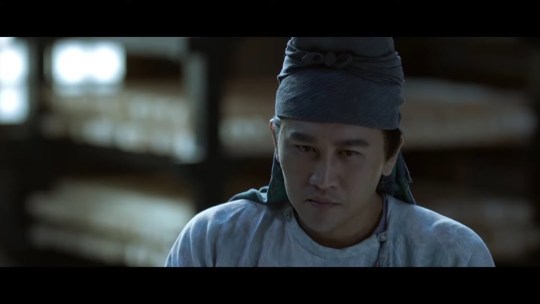
Like He Zhizhang, Cen Shen was also known more for his poetry. While He Zhizhang was more well-known but only has 19 surviving poems, Cen Shen has a whopping 360 surviving poems, mostly about his travels near the border.
Yan Yuhuan (严羽幻)/ historical: Yang Yuhuan (楊玉環):


Yan Yuhuan's historical counterpart, Yang Yuhuan, is arguably the most historically famous female from the drama. Heck, she might be one of the the most famous women from Chinese history, period. Her fame came from her looks, so much so that she became one of the four most beautiful women of Chinese history. It was no wonder that Li Longji/Xuanzong (the emperor depicted in the drama) was captivated by her. She was also distantly related to Yang Guozhong, the treacherous chancellor that Zhang Xiaojing killed (according to Yao Runeng's book).
Unfortunately for Yang Yuhuan, during the rebellion, everyone thought she was the cause of the unrest (not true; there were many many other causes) and a "bad influence" for the emperor , so the emperor ordered her to hang herself. In short, she became another sacrifice in a society controlled by men.
Xu Hezi (许合子)/ historical: Xu Hezi (許鶴子):

If the real Yan Yuhuan's story was the tragedy of a beautiful Tang-era woman, the real Xu Hezi's story was the tragedy of a Tang-era female entertainer. The historical Xu Hezi was also a famous singer of commoner descent, but when the rebellion happened, she was forced to escape Chang'an, and died a lowly entertainer/prostitute.
Guo Lishi (郭利仕)/ historical: Gao Lishi (高力士):

Li Bi's "uncle Guo" wasn't explicitly mentioned as a eunuch in the drama, though his headwear gave it away (his headwear is called "long jin"/籠巾, and is usually reserved for eunuchs in historical dramas). Historically, Gao Lishi was a powerful eunuch who was first favored by Wu Zetian (the first and only female Chinese emperor), then Li Longji/Xuanzong. Gao Lishi was very corrupt: rumors suggest he had more money than the national treasury. However, he was also very loyal. Upon hearing of Li Longji/Xuanzong's death in 762 AD, he fell ill out of grief, and died.
Others:
(These people who appeared in the drama were also taken from history, and because their roles in the drama were small, I will only list their names here. It is worth noting, however, that although their roles seemed small in the drama, they were all influential people in Tang court in 744 AD)
Gan Shoucheng (甘守诚/甘守誠)
Mao Shun (毛顺/毛順)
Jiao Sui (焦遂)
Chen Xuanli (陈玄礼/陳玄禮)
Ji Wen (吉温/吉溫)
Luo Xishi (罗希奭/羅希奭)
Wang Hong (王鉷)
Chen Xilie (陈希烈/陳希烈)
Pei Dunfu (裴敦复/裴敦復)
Wei Jian (韦坚/韋堅)
Huangfu Weiming (皇甫惟明)
Li Jingzhong (李静忠/李靜忠)/ later changed to Li Fuguo (李輔國)
Han Chaozong (韩朝宗/韓朝宗)
Li Shizhi (李适之/李適之)
133 notes
·
View notes
Photo
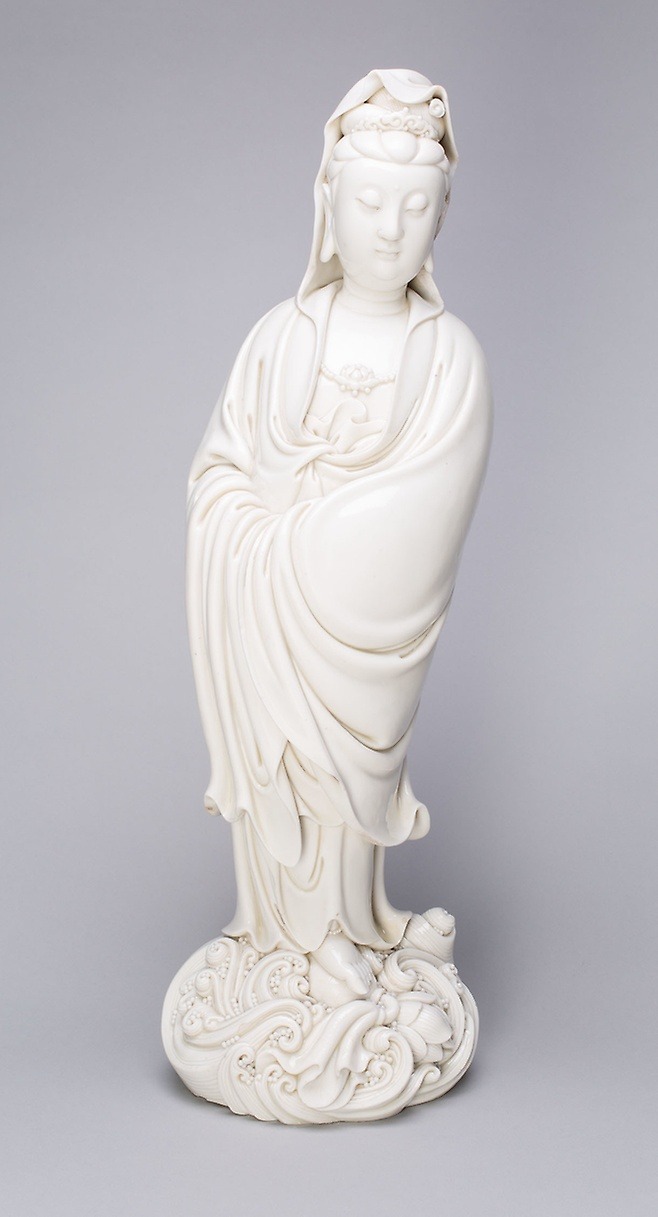
Goddess Crossing the Sea (Guo hai Guanyin), 1644, Art Institute of Chicago: Asian Art
In the late Ming dynasty, sailors and fishermen of southeast coastal China worshipped this bodhisattva, Guohai Guanyin, as a savior. The goddess was believed to float across the sea on a lotus flower, rescuing men in a tempest. The refined porcelain body and delicate, creamy white glaze indicate that this statue was made at the kilns of Dehua, a rural county in southeast China that is famous for its fine, white porcelain stone. The square seal impressed on its back shoulder attributes this figure to a well-known porcelain sculptor of Dehua, He Chaozong (active late 16th early 17th century). Beginning in the late seventeenth century, Dehua figures and vessels were dispatched to world markets. Porcelains of this type subsequently achieved fame in Europe under the French name, blanc de chine ("white from China"), and inspired similar English and French wares in soft-paste porcelain, notably at Chelsea and Meissen. Lucy Maud Buckingham Collection
Size: 47.1 × 15.0 × 13.1 cm (18 9/16 × 5 15/16 × 5 3/16 in.)
Medium: Dehua ware (blanc de chine); porcelain
https://www.artic.edu/artworks/12509/
18 notes
·
View notes
Photo

Goddess Crossing the Sea (Guo hai Guanyin), 1644, Art Institute of Chicago: Asian Art
In the late Ming dynasty, sailors and fishermen of southeast coastal China worshipped this bodhisattva, Guohai Guanyin, as a savior. The goddess was believed to float across the sea on a lotus flower, rescuing men in a tempest. The refined porcelain body and delicate, creamy white glaze indicate that this statue was made at the kilns of Dehua, a rural county in southeast China that is famous for its fine, white porcelain stone. The square seal impressed on its back shoulder attributes this figure to a well-known porcelain sculptor of Dehua, He Chaozong (active late 16th early 17th century). Beginning in the late seventeenth century, Dehua figures and vessels were dispatched to world markets. Porcelains of this type subsequently achieved fame in Europe under the French name, blanc de chine ("white from China"), and inspired similar English and French wares in soft-paste porcelain, notably at Chelsea and Meissen. Lucy Maud Buckingham Collection
Size: 47.1 × 15.0 × 13.1 cm (18 9/16 × 5 15/16 × 5 3/16 in.)
Medium: Dehua ware (blanc de chine); porcelain
https://www.artic.edu/artworks/12509/
2 notes
·
View notes
Photo


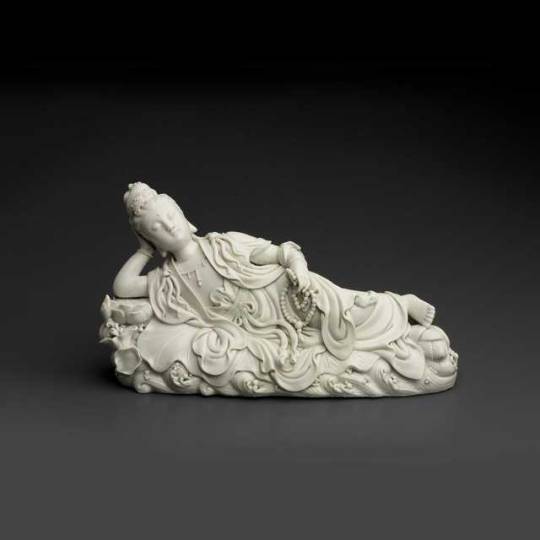

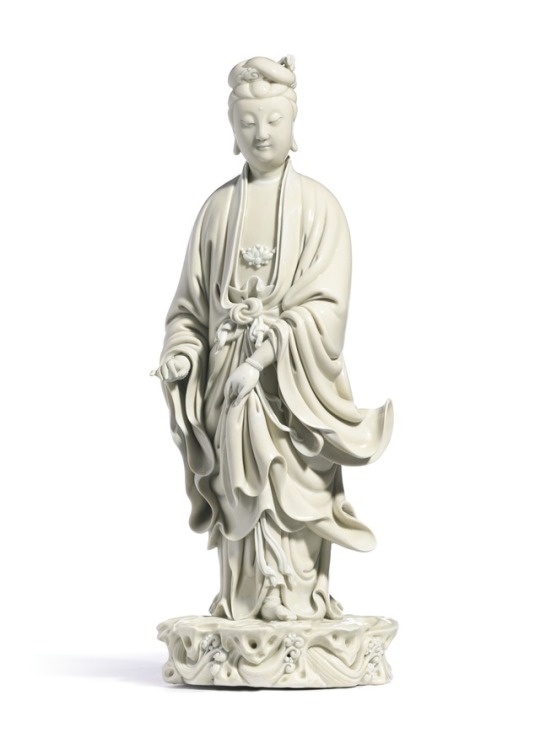
Images 1 & 2: Dehua porcelain figure of a seated Guanyin 觀音 (the Bodhisattva of Compassion) holding a basket containing fish (referring to her rescue of one of the sons of the Dragon King), while leaning against an ornamental rock on the edge of a shore with waves lapping at the edges. Date: Qing dynasty, 18th-19th c. Height: 15.3 cm. Museum number: PDF.415
Image 3: A Dehua reclining Guanyin from the 20th century. The figure is modelled reclining on a bed of leafy lotus borne on frothing waves. The lotus blooms are a reference to her rebirth and are an emblem of purity. Length: 29.5 cm
Image 4: A late Qing dynasty-Republic period Dehua figure of Guanyin seated on a tall rocky outcrop with legs crossed and one arm bent to support a ruyi sceptre. A smiling acolyte stands on a leaf above crashing waves. The back of the sculpture is impressed with a Dehua double-gourd-shaped mark and a seal mark, Xu Yunlin zhi (made by Xu Yunlin). Height: 37.5 cm
Image 5: A 17th century large Dehua figure of Guanyin, modelled standing on a rocky base buffeted with waves. The back is impressed with a He Chaozong seal mark. Height: 51.5 cm.
Sources: British Museum, Sotheby’s, Christie’s- 1, 2
#觀世音#德化窯#Dehua ware#Fujian#blanc de chine#Guanyin#porcelain#sea#waves#fish#Dragon King#rock#Qing Dynasty#20th century#19th century#18th century#lotus#Republic period#ruyi#Xu Yunlin#He Chaozong
17 notes
·
View notes